-
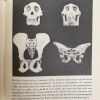 +16 +1
+16 +110 Lies Answers in Genesis Tells About Lucy
Donald Johanson’s book Lucy: The Beginnings of Humankind was what first made me fall in love with paleoanthropology. While I have learned about dozens more fossils over the last two years, I still have a special place in my heart for Lucy. So you can imagine how excited I was to defend her from the lies of the young-earth creationists at Answers in Genesis! I once might not have known how to debunk their claims, but I now have the knowledge, the books, and a little bit of money needed to find so many errors in their articles.
-
 +5 +1
+5 +1The human brain: not just large but finely shaped
Large brains have long differentiated humans and primates from other mammals and there is a clear evidence that brain mass increased through time. Now a new study by the University of New England, in collaboration with Italian and American institutes, has shown that the evolution of higher cognitive capacity is not only due to having a larger brain but also due to the brain having the "right" shape.
-
 +10 +1
+10 +1Prehistoric monkeys rafted across the Atlantic to South America
A crew of a now-extinct monkeys made a treacherous transatlantic journey on a natural raft from Africa to settle in South America around 35 million years ago, according to a study of fossilized teeth found in Peru.
-
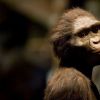 +3 +1
+3 +1Great apes probably smarter than early human Australopithecus species
Early human relatives may not have been as smart as the great apes of today, casting into doubt previous theory, a new study suggests. Despite having a similar-sized brain to gorillas, chimps and orangutans, scientists believe Australopithecus had a lower rate of blood flow to their brain.
-
 +24 +1
+24 +1Chimpanzees Sway, Clap Their Hands When They Hear Music
While the chimps didn't match the beat, it's an indication they respond instinctively to sounds.
-
 +23 +1
+23 +1Endangered Mountain Gorilla Populations Are Growing
But the animals remain threatened with extinction
-
 +8 +1
+8 +1Evidence of capuchin monkeys using tools 3000 years ago
A team of researchers affiliated with several institutions in Brazil and the U.K., has found evidence of capuchin monkeys using stone tools as far back as 3,000 years ago. In their paper published in Nature Ecology and Evolution, the group describes the archaeological dig they carried out and the stone tool artifacts they found.
-
 +4 +1
+4 +1Unraveling the Mystery of Human Bipedality
Paleoanthropologist Carol Ward explains how walking upright marked a milestone in hominin history.
-
 +16 +1
+16 +1A Bozo of a Baboon
A talk with Robert Sapolsky.
-
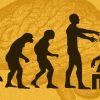 +27 +1
+27 +1Chinese scientists have put human brain genes in monkeys—and yes, they may be smarter (paywall)
A quest to understand how human intelligence evolved raises some ethical questions.
-
 +15 +1
+15 +1Holding Hands with a Chimp
How my suburban-hewn world-view was flipped on its head. By Jesse Bering.
-
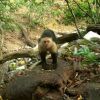 +13 +1
+13 +1Monkeys in South America ‘enter the Stone Age by using tools to break food'
Only some of the monkeys have mastered the tools. By Rob Waugh.
-
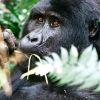 +30 +1
+30 +1Against All Odds, Mountain Gorilla Numbers Are on the Rise
The news coming out of East Africa's Virunga Mountains these days would have made the late (and legendary) conservationist Dian Fossey very happy. According to the most recent census, the mountain gorillas introduced to the world in Gorillas in the Mist, Fossey's book and the film about her work, have grown their ranks from 480 animals in 2010 to 604 as of June 2016. Add another couple hundred apes living in scattered habitats to the south, and their population as a whole totals more than 1,000. Believe it or not, this makes the mountain gorilla subspecies the only great apes known to be increasing in number.
-
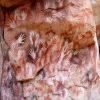 +14 +1
+14 +1Was Science Wrong About Being Right?
Handedness is an ancient trait, but researchers are rethinking its roots. By Gemma Tarlach.
-
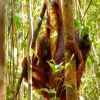 +25 +1
+25 +1Orangutans Use Plant Extracts to Treat Pain
Humans aren’t the only animals that have discovered medicinal products in nature. By Doug Main.
-
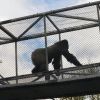 +21 +1
+21 +1Philadelphia Zoo gorilla prefers to walk around like a human
Louis, 18, a male gorilla who has been at the zoo since July 2004, is keeping his hands clean by choosing to walk around on two legs, according to an Associated Press report.
-
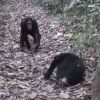 +28 +1
+28 +1Chimps and bonobos speak the same 'language', and we might too
A significant number of gestures made by chimps and bonobos mean the same thing.
-
 +38 +1
+38 +1The battle to save Africa’s endangered mountain gorillas
Civil war, deforestation, disease and poaching have driven the mighty mountain gorilla to the brink of extinction. Conservation efforts have helped boost population numbers, but humans are still their greatest threat. By Eva de Vries.
-
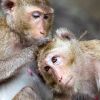 +17 +1
+17 +1Not So Unique? a Key Feature of The Human Brain Has Just Been Found in Monkeys
We humans think we’re so special. To determine what sets us apart from the rest of the animal world, scientists investigate features that might be uniquely human, such as self-awareness or language. By Signe Dean. (May 26, 2017)
-
 +24 +1
+24 +1When Did Humans Start to Walk? 3.3 Million-Year-Old, Fossil Tells All
A new study has found the human spinal structure that enables efficient walking motions was established millions of years earlier than previously thought. This 3.3 million-year-old fossil skeleton is the most complete spinal column of any early human relative; it…
Submit a link
Start a discussion




















